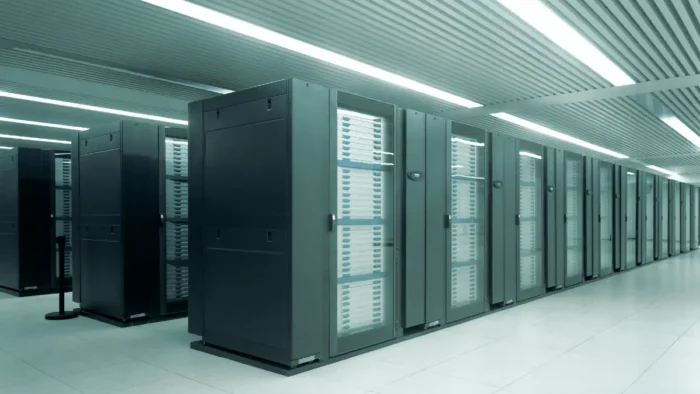Mainframe computers produce pictures of a past era, a time when the term “computer” was synonymous with a massive, heavy machine that required its own room. But the truth is that mainframes have not only survived into the modern age but continue to thrive in some of the world’s most impactful and innovative businesses.
Let’s go into the widely discussed topic of why organizations continue to utilize mainframe computers. We will examine their functions, characteristics, advantages, and potential future developments within corporate environments.
What are Mainframe Computers?
Let’s explain the mainframe computer.
A mainframe computer has a mainframe operating system designed for multiple users, allowing each user to have their own desktop and workspace. This means that there can be multiple users using the same computer at the same time.
Mainframes are high-performance computers with immense processing and storage power. Large industries use them to process billions of transactions, and they are evidently able to handle about two and a half billion transactions per day.
While other computing forms are used in business in various capacities, the mainframe has a special place in the business environment. It is likely to be around for a long time. Since the 1960s, mainframe computers, especially IBM mainframes, have played an important role in large-scale business computing. When it comes to operating systems, in the beginning, they used specially designed mainframe operating systems that changed in the late 1990s.
For example, at the beginning IBM mainframes was sold without any software, so their customers were developing their specific operating system and software. Later, IBM have developed their own operating system for IBM mainframes.
Centralized and Distributed Computing
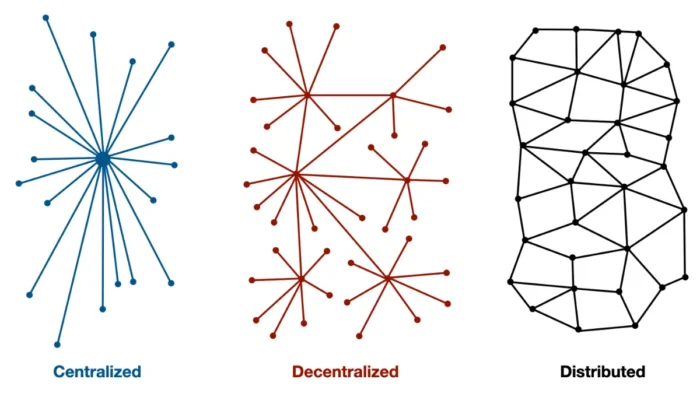
Centralized computing is a model where one central processing unit or more central computers perform data processing. This model favors businesses that require robust, reliable processing capabilities for vast amounts of data, as seen in banking or airline reservation systems.
Conversely, distributed computing divides tasks among multiple interconnected computers, not relying on a single machine.
While mainframes traditionally represent centralized computing, modern mainframes adaptations and technologies enable them to participate in distributed environments as well, offering the best of both worlds.
The Relevance of a Modern Mainframe Computer in Business
History shows that mainframes were the basis of data processing, a trend that continues today in financial institutions and other key sectors.
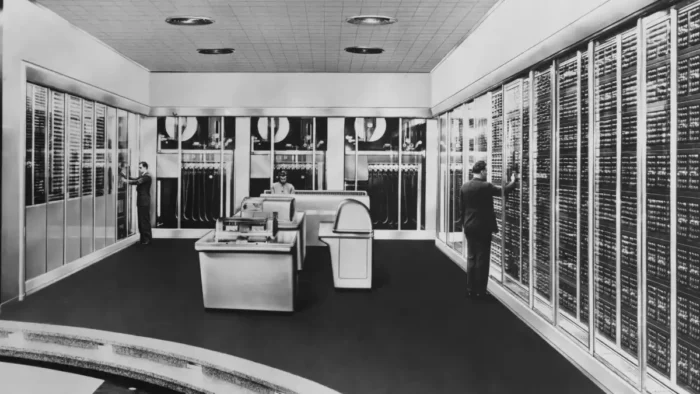
What enables these massive machines to endure even as smaller, quicker, and more affordable alternatives appear to have surpassed them?
The answer is not in their nostalgic value but in the depth of their capabilities and their critical role in supporting core business operations.
Cracking the Mainframe Code
A mainframe computer is not just a regular desktop or server; it is distinguished by its massive processing capabilities and its capacity to manage large amounts of transactions and data. The architecture is crafted to optimize speed, reliability, and security, setting a standard in the field of computing that is yet to be surpassed. A mainframe represents the core characteristics that businesses desire for their operations.
Mainframe…or Mainframe Not?
While there’s a common misconception that mainframes are outdated, the reality is they modern mainframe adapted to the changing technological landscape. Modern mainframes can run many workloads alongside traditional mainframe applications, making them adaptable. This adaptability is crucial for companies relying on historical and real-time data to make important decisions.
What Can Mainframe Systems Do?
Businesses today rely on the mainframe to:
- Process thousands of transactions per second.
- Support many users and application programs at the same time.
- Manage terabytes of information.
- Handle large-bandwidth communication.
The age of mainframe computing technology and its surrounding ecosystem is starting to show. Mainframe modernization has many benefits: it can reduce costs, modernize legacy stacks, and leverage cloud computing.
For example, leveraging the cloud offers more scalability, agility, and cost-effectiveness, which isn’t possible for legacy applications running on mainframes.
Features that are Advantages of Mainframe Computer?
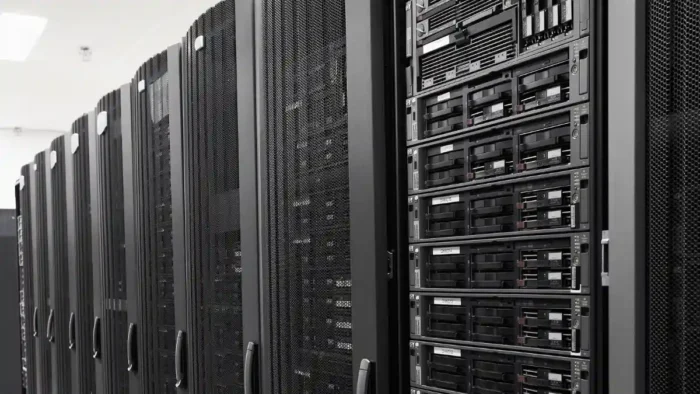
The mainframe does not operate in a vacuum; the reasons for its continued use are deeply rooted in the features that distinguish it from other computing architectures.
There are many reasons why large businesses rely on a mainframe hardware system, and here are some of them:
Performance
Mainframe computers have more processing power than some other computers, such as minicomputers, servers, workstations, and personal computers.
Mainframes are engineered for high-volume transactions. They excel in environments that demand massive data processing tasks quickly and reliably, such as financial transaction processing or airline reservation systems. Their architecture is optimized for data throughput and reliability, enabling them to handle tens of thousands of transactions per second without faltering.
On the other hand, for example, personal computers are designed with the everyday user in mind, prioritizing versatility and user interface over raw processing power for massive data handling. While the processing speed of PCs has significantly increased over the years, allowing them to handle complex tasks and run sophisticated software, they still operate on a much smaller scale than mainframes.
Security
Cybersecurity has never been more critical, with breaches becoming larger in scale and more sophisticated. With their superior security measures, Mainframes continue to be the first choice for securing sensitive information and business-critical data.
Data is a valuable business resource, and data security today is really important for types of companies.
Commercial databases like customer lists, employee information, and financial records are critical data that must be securely managed. At the same time, the information needs to be available to users authorized to see it. A mainframe computer can manage both. It is possible to share and yet still protect the data.
Reliability and Uptime
Imagine the chaos if a bank’s systems went down during the week’s busiest period. For this reason, mainframes continue to assure extraordinary reliability and uptime, enabling companies to operate without fear of downtime.
There is a high priority on a system remaining in service all the time. RAS (reliability, availability, and serviceability) is a collective term for mainframe software and hardware characteristics that users value.
Along with the hardware with extensive self-recovery capabilities, mainframe operating systems demonstrate RAS through features like storage protection and a controlled maintenance process. The reliability of the software is due to extensive testing and the ability to make quick updates for detected issues. Replacing hardware and software elements without impacting the rest of the running system is possible.
Scalability
Businesses often keep growing, which requires more infrastructure to cope with increased demand. The degree to which a business can add capacity without disrupting normal business processes and incurring heavy overheads is largely determined by the scalability of the computing platform.
The scalability of mainframe computers is high in terms of both software and hardware.
Compatibility
Mainframe customers usually invest a lot in their applications and data. Some applications have taken years to refine, and others may be new. Compatibility means an application’s ability to work in a system or with other devices or programs.
Continuing support for applications of different ages is essential. Much design work on system hardware and new software revolves around the need for compatibility. Total compatibility across decades of changes is not really possible, but mainframe hardware and software designers make it a top priority.
Mainframe Computer Examples and Use Cases
Today, mainframe computers play a role in the daily operations of many of the world’s largest businesses. A mainframe computer often works behind the scenes when a user accesses an application through a web browser.
Mainframes have found homes in various industries thanks to their unique capabilities. Here are some exemplars where mainframes continue to shine.
Banking
In banking and finance, every millisecond counts, and the stakes of data integrity and privacy are colossal. Mainframes not only process millions of transactions daily without breaking but also do so while maintaining security protocols.
Every bank, both large and small, uses mainframe computers to handle data on a large scale. The banking industry needs to process and track millions of transactions every day.
This includes tracking customers and their accounts, online account updates, credit card transactions, and ATM withdrawals. This can be overwhelming when there are many customers. Using mainframe computing helps to keep everything organized and easily accessible.
Investment banks that deal in high-frequency trading need huge amounts of processing power. They need to react quickly to any shifts in the larger financial markets if they want to stay on top of the industry.
E-commerce
Just about every large business involved in e-commerce, from insurance agencies to stock brokerage firms, uses mainframe computers. They have the necessary speed, capacity, and storage for a large e-commerce company that processes daily transactions. E-commerce businesses can keep track of all their important information, such as inventory, financial transactions, and employee pay.
Online businesses may use mainframes because they are ideal for web transactions. A large number of applications and users can access the same data at the same time without interfering with each other.
A new business idea will not necessarily mean a business will succeed. It involves many other factors, such as defining its products, target audiences, and main competitors and establishing what technology to use to manage data.
Manufacturing
Mainframes are critical in the manufacturing sector for managing complex supply chains, inventory, and production processes, where real-time data analysis and just-in-time processes can make or break a manufacturing business.
For example, mainframes allow manufacturers to analyze real-time data, ensuring materials are ordered and produced just in time to meet demand without overstocking or delays.
Also, mainframes can manage vast amounts of data across complex networks, ensuring that every component of the manufacturing process is synchronized. For example, a car manufacturer can track supply inventory, production schedules, and delivery timelines simultaneously, and in such a way improving efficiency and reducing costs.
The reliable performance of mainframes ensures that these critical operations run smoothly 24/7, supporting manufacturers in achieving their goal of delivering high-quality products on time.
Healthcare
Healthcare is another industry where keeping track of millions of transactions is necessary. There are millions of patients across the world with their own personal information and medical history. All data points, from medication, prescriptions, appointments, and procedures, must be entered into the system.
Privacy is of vital importance in healthcare. Mainframe computers keep information private because they store it so that only certain people can access it. Physicians, for instance, can access data, such as test results, to provide suitable treatment.
The Economics of a Mainframe: Exploring the Benefits
Mainframes are synonymous with high operational costs, but they bring benefits that cover these initial expenses.
- Economies of scale. Mainframes have a higher initial investment, but their cost per transaction is significantly lower than other architectures when spread across the large volume of tasks they handle.
- Legacy systems support. Many businesses work within the constraints of legacy systems that only mainframes enable support. This makes the strategic advantage of maintaining a mainframe well worth the cost.
- Data processing powerhouse. The unmatched processing capabilities of mainframes are an invaluable asset for businesses that rely on data — whether for analytics, customer management, or operations.
- The cost of downtime. While the economic benefits of uptime aren’t directly quantifiable, the cost of downtime can be catastrophic for many companies. The reliability of the mainframes ensures this cost is effectively managed.
Mainframes in the Future of Business
With the expansion of cloud and edge computing, you might question the place of mainframe architectures in the future business ecosystem. However, mainframes are not relics awaiting their fate; they are still evolving, and their future has never looked more promising.
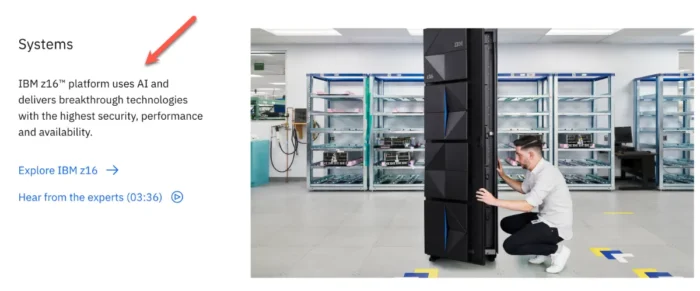
Cloudy with a Chance of Mainframe
Cloud providers are integrating mainframes into their offerings, recognizing their unique value. Modern cloud services are now complementing mainframes, not replacing them.
For example, an IBM system like IBM Z is essential to a business’s hybrid cloud and AI strategy.
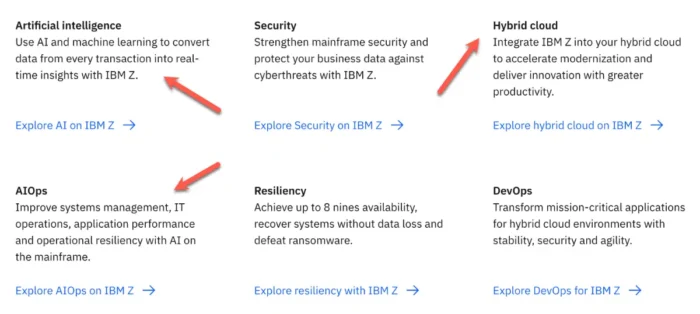
Agile and Adaptable
Mainframe vendors are continually innovating, making mainframe systems more agile and able to integrate seamlessly with newer technologies. With new programming languages and tools, developers can now work with mainframes like other systems.
Furthermore, modern mainframe architectures like the previously mentioned IBM system are built to support DevOps initiatives. Developers can quickly build, test, and deploy applications within a single architecture.
The Skillset to Match the System
While there is an increasing retirement wave of mainframe experts, there remains a keen interest in developing skills to ensure the next generation of IT professionals are equipped to manage these machines.
Many universities and online platforms offer courses on mainframe technologies and tools, ensuring a steady supply of professionals with the necessary expertise to work with these systems.
📖 More similar articles
What Is The Most Common Software Business People Use To Protect Their Computers
Moonbeam (GLMR): What’s Next For This Trending Crypto?
6 Excellent Gifts for Computer Geeks
A Closer Look At What Cloud Computing Is And Its Advantages
Invest In Your Business: Why You Should Continually Upgrade Your Hardware
Final Thoughts
Mainframes owe much of their popularity to the fact that they are highly reliable and secure. They have maintained their compatibility with previous releases while continuously evolving and improving.
IT organizations often use the mainframe to host important applications. These applications include inventory and production control, payroll, customer order processing, financial transactions, etc. Mainframes aren’t going anywhere soon, but businesses must look at modernizing them. This can offer many benefits, including lowering costs and increasing agility and scalability.

